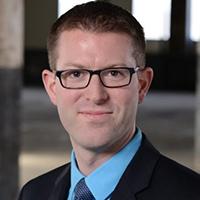In the dynamic world of retirement, the SECURE Act 1.0 and 2.0 has emerged as a significant catalyst for change, particularly for small- and medium-sized enterprises. This legislation—an acronym for Setting Every Community Up for Retirement Enhancement—has significantly enhanced the menu of options for employers contemplating a retirement plan, making a considerable impact on retirement strategies. The groundbreaking first iteration, SECURE Act 1.0, launched in 2019 and encouraged the establishment of retirement plans through expansive tax credits and administrative modifications. It also introduced the Pooled Employer Plan (PEP) which enabled unrelated employers to combine their resources for the advantage of a larger, more efficient plan.
Now, the landscape is again changing thanks to the introduction of SECURE Act 2.0, which ushered in many new provisions and opportunities for employers and employees. It holds the promise to reshape the retirement industry, making it increasingly accessible and beneficial to all parties involved.
Understanding key changes in Secure Act 2.0 for businesses
The success of SECURE Act 1.0 paved the way for the introduction of SECURE Act 2.0 in late 2022. This new act expands upon its predecessor by doubling tax credits for certain employers that are establishing a plan and introducing an employer contribution tax credit. This encourages businesses to not only establish retirement plans, but also support employees who participate in them. These provisions are crafted to primarily benefit small- and medium-sized employers, and in many cases incentivizes the establishment of a plan.
Student loan repayments
One of the most significant provisions of SECURE 2.0 is the introduction of student loan repayments. This allows employers to match an employee's student loan repayments as a 401(k) contribution. This optional provision provides a competitive advantage in a tight labor market, encouraging employees to join and remain with a company. There are still uncertainties surrounding the implementation of this provision, and many plan sponsors are planning on implementing student loan repayments as the industry seeks further clarity from regulatory agencies.
“Rothification”
Another major change introduced by SECURE 2.0 is "rothification". This alters the tax treatment of the catch-up contributions of the highest earners, making them subject to taxation before investment in their retirement plan. This has raised many questions, particularly about how employers should accommodate Roth tax treatment.
Expansion of automatic enrollment
The Act also mandates the expansion of automatic enrollment from 2025. For employees of businesses subject to this provision, enrollment will start at 3% with an automatic escalation of contributions up to 10%, not exceeding 15%. This change is designed to encourage early enrollment and consistent contribution escalation over time. The introduction of automatic enrollment is expected to significantly change the retirement landscape.
Administrative changes and “emergency provisions”
SECURE 2.0 also brings administrative changes and the introduction of several “emergency provisions” for employees, including changes to the treatment of hardship distributions, the creation of a one-time personal expense distribution, and the establishment of a pension-linked emergency savings account (PLSA). These changes make accessing funds in a 401(k) easier than ever before, alleviating employees' fears of contributing to it and providing a safety net in case of events.
Pooled Employer Plans (PEP)
Additionally, SECURE 1.0 introduced the Pooled Employer Plan (PEP), which provides a simple, cost-effective way for a business to join other businesses in a pooled plan. This allows businesses to delegate the operation of a plan to a Pooled Plan Provider (PPP) and this provider assumes much of the fiduciary risk traditionally shouldered by the employer sponsor of a standalone plan.
In summary, the SECURE Act 1.0 and 2.0 have reshaped the retirement domain, and will continue to do so, unveiling fresh prospects and hurdles for businesses. As we journey through this reimagined landscape, the importance of staying updated and adaptable cannot be overstated. The SECURE Act has rendered retirement planning more achievable and advantageous for a multitude of businesses. However, understanding the intricacies and potential risks is equally crucial. To ensure that your business navigates these changes effectively, professional advice tailored to your distinct circumstances and requirements is highly recommended. SECURE 2.0, while adding layers of complexity, has also opened up a treasure trove of benefits for employers and employees alike. As the industry finds its footing amidst these changes, retirement planning is becoming increasingly accessible and advantageous for all stakeholders.
Stay informed about evolving regulations and opportunities within the retirement plan landscape with these resources:
- IRS Guidance Changes SECURE Act 2.0
- State Mandated Retirement Programs
- The Road to Retirement Special Report
To learn more about retirement solutions for your firm, visit aicpa.org/retirement .
Guest contributor Zachary Keep has been involved in both the retirement industry for nearly 15 years and has extensive experience navigating compliance issues for both 403(b) and 401(k) plans.

